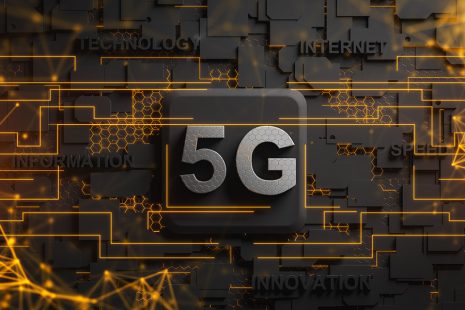
Mobile carriers are making strides in deploying 5G networks worldwide, and everyday devices are being designed for 5G compatibility. According to a March 2020 study conducted by Business Performance Innovation Network, almost three-quarters of mobile service providers have begun 5G network rollouts or plan to do so by Q3 of 2021.
As discussed in blog #1 of this series, the rollout of 5G will transform and facilitate the adoption of emerging technologies. 5G has great market potential in many industries including industrial, automotive and medical. It will also help improve existing connections and communications, which have become paramount as COVID-19 has forced many businesses to pivot to remote work environments.
The adoption of high-speed, low-latency 5G infrastructure is multifaceted: it requires the buildout of infrastructure, including the addition of many cell towers, as well as a virtualization of the 5G network. This considers the addition of many microsites and other means of extending ultra-high-frequency 5G networking in and around buildings.
The optimization of antennas, power transmission and other connector components will drive the extensive, rapid adoption of 5G technology and change the way manufacturers approach the design process.
Higher Frequency, More Cells

The highest 5G performance, in terms of bandwidth/speed, will typically be achieved with millimeter-wave (mmWave) frequencies over 10GHz, which is new to consumer mobile device networks. Although they offer potentially as much or more bandwidth for RF throughput, these high frequencies, do not travel as far and do not penetrate vegetation and buildings as effectively as lower, slower frequencies. To circumvent these RF coverage and penetration issues, carriers have deployed more cell sites, especially in dense urban areas.
Consequently, wireless carriers are in the process of installing an estimated 250,000 additional small cell sites nationwide to accommodate the widespread use of mmWave frequencies. While there are multiple types of cell configurations that can handle anywhere from a dozen nearby devices to hundreds of connections, most of the cells are compact and discrete. These low-power nodes, which are about the size of a backpack, are made up of radio equipment and antennas.

Powering 5G Speeds
In addition to the increase in data and speeds anticipated by 5G, small cell sites are being designed to use even less power than the current 4G infrastructure does. 5G cell sites are expected to reduce the amount of always-on signal transmissions common in lower-frequency connections. This will allow 5G cells to switch to a “sleep mode”, potentially reducing energy consumption by 10 times compared with current idle systems.
Similarly, the use of multiple input, multiple output (MIMO) architecture—which allows 5G carriers to precisely point the signal from the cell site to the intended receiver—results in an optimal signal for the receiver (rather than transmission at high power in all directions). As a result, less energy is transmitted for each receiver, but the cell site can transmit to other receivers in various directions at the same frequencies.
Designing Devices to Be 5G Compatible
The evolution in network infrastructure is just one side of the 5G rollout. Device manufacturers must prepare now to leverage the benefits of 5G by defining optimal RF device designs, regardless of the network structure. As with the cell sites, these designs will have to implement a completely different—and more complex—approach.
Designing for mmWave 5G, requires attention not only to the antennas but also to the feeds/traces and connections to the antennas. These connectors need to be rated at speeds that exceed 10GHz. To get signals from the 5G electronics on each device will require much attention to end-to-end signal integrity – for each high frequency 5G device. This focus on signal integrity, will define how well these devices perform and can utilize the ultra-high-speed 5G signals.
Thoughtful design of the components transmitting and receiving 5G frequencies is critical to a seamless rollout of the next-gen network. To learn more about the technologies required to build out 5G infrastructure, read Molex’s latest 5G whitepaper. Also, review all of our 5G solutions and offerings on our 5G industry page.



